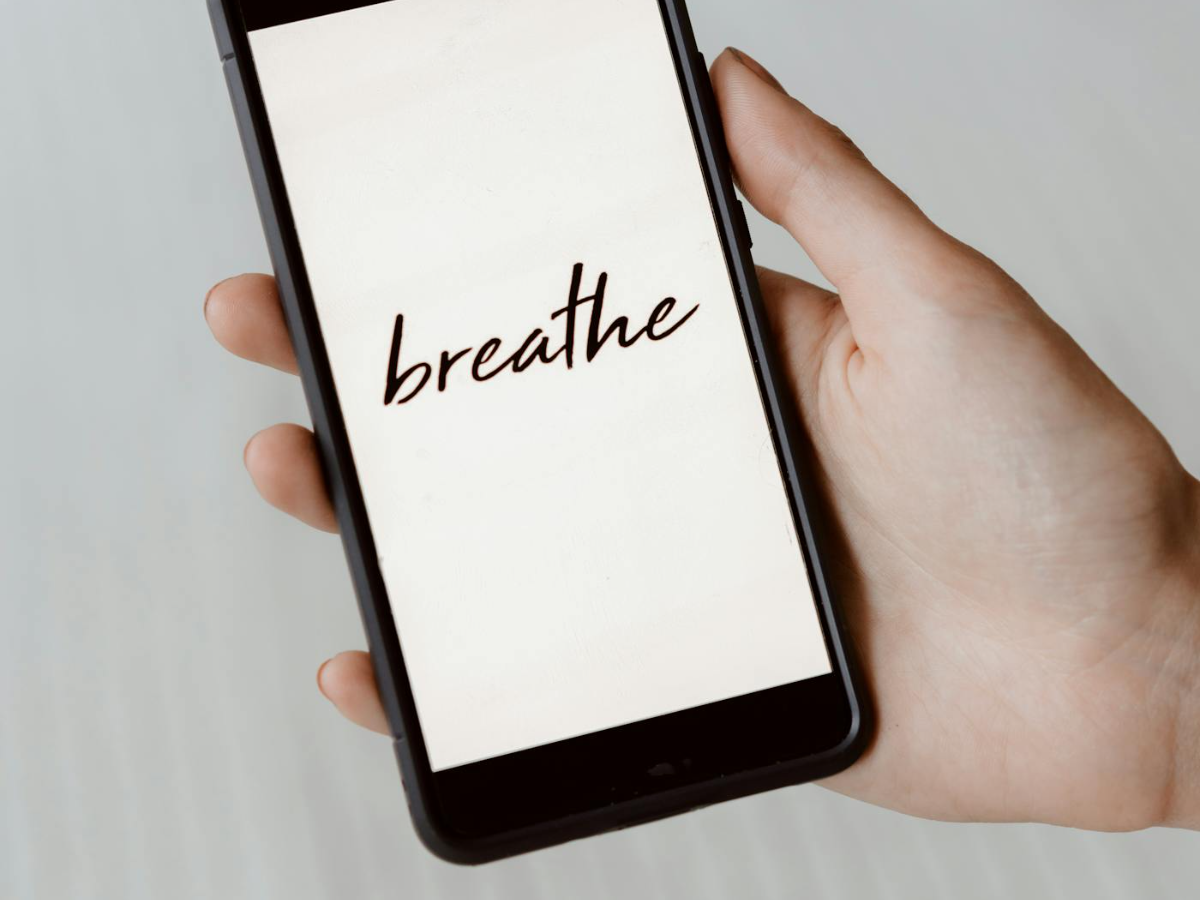Box Breathing: 4-Step Guide to Calm and Focus
Box breathing, also known as square breathing, is a simple and effective deep breathing technique that can help reduce stress, increase focus, and promote relaxation.
Definition of Box Breathing
Box breathing, also known as square breathing, is a simple yet powerful technique that involves inhaling, holding, exhaling, and holding again, all for equal lengths of time. This rhythmic breathing practice calms the mind, reduces stress, and enhances focus, making it a popular tool for relaxation.
Historical Background and Origins
The roots of box breathing can be traced back to ancient meditation practices, often used by monks and yogis to center their thoughts and promote mindfulness. Although its technique is quite straightforward, it’s been embraced by various cultures worldwide.
- Monastic Traditions: Used in Buddhism, helping monks maintain focus during meditation.
- Military Training: Adopted by military personnel for stress management and to enhance performance under pressure.
Just like a simple recipe passed down through generations, box breathing offers everyone a way to cultivate calmness in today’s fast-paced world.
Understanding Box Breathing
Components of Box Breathing
Box breathing consists of four key components, each contributing to its effectiveness in promoting relaxation and mental clarity. This technique can seem straightforward, yet the rhythm and duration are crucial to achieving the desired benefits:
- Inhale: Breathe in through the nose for a count of four.
- Hold: Retain the breath for another count of four.
- Exhale: Release the breath slowly through the mouth for four counts.
- Hold: Pause again for four counts before the next inhale.
These four steps create the “box” that gives the technique its name.
How Box Breathing Works?
The magic of box breathing lies in its ability to regulate the autonomic nervous system, which plays a critical role in managing stress responses. When practicing, the body shifts from a state of fight-or-flight to one of rest and digest.
- Increased Oxygen Flow: Promotes greater oxygenation of the blood, enhancing mental clarity.
- Reduced Heart Rate: Slowing down the breath naturally lowers heart rate, signaling the body to relax.
- Focus and Clarity: The structured nature of this practice allows the mind to focus sharply on the present moment.
Think of box breathing as a mental reset button — with each cycle, individuals can release tension and foster a sense of calm, readying themselves for whatever challenges lie ahead.
Benefits of Box Breathing
Physical Benefits
Box breathing offers a multitude of physical benefits that can significantly improve overall health. By engaging in this technique regularly, individuals can experience:
- Improved Respiratory Function: Enhances lung capacity and oxygen intake.
- Lower Blood Pressure: Induces relaxation, leading to decreased blood pressure levels.
- Enhanced Immune Function: Reduces stress-related illnesses by promoting a balanced state in the body.
Many users have reported feeling more energized and less fatigued after dedicating just a few minutes to box breathing.
Mental Health Benefits
The mental health advantages of box breathing are just as compelling. This practice can:
- Reduce Anxiety: Helps calm the mind and mitigate feelings of anxiety during stressful situations.
- Enhance Focus and Concentration: Clears the mental clutter, allowing for improved attention to tasks at hand.
- Promote Emotional Stability: Regular practice can contribute to a more balanced emotional state, providing tools for coping with life’s challenges.
For instance, a student preparing for exams found that incorporating box breathing into their routine not only helped reduce their nerves but also improved their focus. These benefits extend beyond immediate stress relief; over time, practitioners often find themselves more resilient in the face of life’s ups and downs.
Scientific Evidence and Research
Studies Supporting Box Breathing
The efficacy of box breathing is not just anecdotal; numerous studies have highlighted its benefits. Research shows that controlled breathing techniques like box breathing can lead to significant improvements in physiological and psychological health.
- Clinical Trials: Some studies conducted on military personnel have shown that practicing box breathing reduced stress and enhanced performance during high-pressure situations.
- Meta-Analyses: Reviews of multiple studies indicate that controlled breathing can aid in managing anxiety and depression, leading to improved overall mental wellbeing.
These findings suggest that box breathing is a valuable tool for managing stress, supported by empirical evidence.
Impact on Stress and Anxiety Levels
Box breathing has a profound impact on stress and anxiety levels, as confirmed by scientific research. Participants in studies focusing on this technique have experienced:
- Decreased Cortisol Levels: Research indicates that structured breathing can lower the production of cortisol, the stress hormone.
- Improved Heart Rate Variability (HRV): Increased HRV is associated with a healthier response to stress, which has been observed among regular box breathing practitioners.
For example, many individuals have shared experiences of using box breathing before presentations or important meetings, leading to greater calmness and confidence. The interplay of mind and body through this practice has been well-documented, emphasizing its role in enhancing emotional regulation.
How to Practice Box Breathing?
Step-by-Step Guide to Box Breathing
Practicing box breathing is quite simple and can be done almost anywhere. Here’s a quick step-by-step guide to get started:
- Find a Comfortable Position: Sit or stand comfortably with a straight posture.
- Inhale: Breathe in slowly through your nose for a count of four.
- Hold: Retain your breath for four counts.
- Exhale: Let the breath out gently through your mouth for four counts.
- Hold: Pause and hold your breath again for another four counts.
Repeat this cycle for several minutes, focusing on the smooth rhythm of your breath. You’ll find that with practice, it becomes a naturally calming routine.
Tips for Incorporating Box Breathing into Daily Routine
Incorporating box breathing into your daily routine can be rewarding and beneficial. Here are some practical tips:
- Set Reminders: Use your phone to set daily reminders for practice sessions, ideally at a time when you feel stressed.
- Pair it with Other Activities: Blend box breathing with meditation or yoga — both enhance the benefits of the practice.
- Practice Before Key Events: Utilize box breathing before meetings, exams, or public speaking to manage anxiety effectively.
Individuals often share how simply taking five minutes to breathe before tackling the day’s tasks can significantly impact their mindset. By making box breathing a regular part of life, one can cultivate a profound sense of calm and focus.
Variations of Box Breathing Techniques
Alternate Nostril Breathing
Alternate nostril breathing, known as Nadi Shodhana in yoga, is a wonderful complement to box breathing. This technique promotes balance and relaxation through focused breath control.
Here’s how to do it:
- Close your right nostril with your thumb and inhale through your left nostril for a count of four.
- Close the left nostril with your ring finger and release your right nostril; exhale through the right nostril for a count of four.
- Inhale through the right nostril for four counts.
- Switch nostrils by closing the right nostril again and exhale through the left nostril for four counts.
By alternating breaths, practitioners often report enhanced clarity and peace of mind, much like the calming effects achieved through box breathing.
4-7-8 Breathing Technique
Another popular variation is the 4-7-8 breathing technique, developed by Dr. Andrew Weil. It’s particularly effective for promoting relaxation and sleep quality.
Steps to practice:
- Inhale deeply through the nose for a count of four.
- Hold the breath for a count of seven.
- Exhale slowly through the mouth for a count of eight.
This method encourages a longer exhalation, which enhances relaxation and helps regulate stress levels. Many individuals find that integrating this technique into their evening routine aids in winding down after a hectic day.
Incorporating these variations can enrich one’s breathing practice, providing additional tools for stress management and promoting a deeper connection between body and mind.
Applications of Box Breathing
Use in Fitness and Sports Performance
Box breathing is increasingly recognized in fitness and sports circles for its effectiveness in enhancing performance. Athletes often leverage this technique to sharpen their focus and manage anxiety before competitions.
Key benefits include:
- Improved Endurance: Controlled breathing increases oxygen efficiency, helping athletes perform better over longer periods.
- Enhanced Focus: By centering the mind, box breathing allows athletes to concentrate on their technique and strategy.
- Stress Management: Before high-pressure events, athletes use box breathing to calm pre-competition jitters.
For example, many professional runners incorporate box breathing during warm-ups to arrive at the starting line with a clear mind and steady breath.
Role in Meditation and Mindfulness Practices
In the realm of meditation and mindfulness, box breathing serves as a foundational tool for cultivating awareness and tranquility. Practitioners often use it to deepen their meditation experience by anchoring their attention to the breath.
Benefits include:
- Enhanced Mindfulness: Focusing on each step of the breathing process fosters present-moment awareness.
- Stress Reduction: Regular practice can lead to long-term decreases in stress and anxiety levels.
- Emotional Regulation: Box breathing aids in navigating difficult emotions by creating a pause before reactions.
Many who meditate regularly find that starting with box breathing helps settle the mind and body, creating the perfect environment for deeper introspection and relaxation. By integrating this technique into fitness and mindfulness practices, individuals can harness its full potential, leading to both physical and mental breakthroughs.
Precautions and Considerations
Who Should Avoid Box Breathing
While box breathing can benefit many, certain individuals should approach this technique with caution or even avoid it altogether. These groups may include:
- People with Respiratory Issues: Individuals with conditions like asthma or chronic obstructive pulmonary disease (COPD) should consult a medical professional before practicing.
- Those with Anxiety Disorders: For some, controlled breathing can initially amplify feelings of panic or anxiety. It’s crucial to proceed gradually, ideally with professional guidance.
- Pregnant Women: Due to changes in breathing patterns and oxygen needs, it’s advisable for pregnant women to seek medical advice before engaging in any intensive breathing exercises.
If you’re unsure whether box breathing is suitable for you, consider consulting a healthcare provider.
Potential Risks and Side Effects
Although box breathing is generally safe, there are potential risks and side effects that practitioners should be aware of:
- Dizziness: Extended periods of breath retention may lead to lightheadedness or dizziness due to decreased oxygen levels.
- Hyperventilation: If not done mindfully, rapid or irregular breathing patterns could induce hyperventilation, causing anxiety.
- Discomfort: Some individuals may experience discomfort or anxiety when focusing solely on their breath.
Listening to the body is essential. If you experience discomfort or any adverse effects during box breathing, it’s best to stop and seek guidance. Maintaining awareness of one’s limits is vital for a safe and beneficial practice, allowing box breathing to be a tool for wellness rather than a source of stress.
Personal Experiences and Testimonials
Stories of Individuals Benefiting from Box Breathing
Many individuals have shared inspiring stories about how box breathing transformed their lives. For instance, Jane, a busy executive, found herself overwhelmed with anxiety at work. After integrating box breathing into her routine, she noticed:
- Reduced Stress: She could tackle daunting presentations without feeling paralyzed by nerves.
- Greater Clarity: The technique helped her make decisions with greater confidence and focus.
Similarly, Tom, a competitive athlete, reported that box breathing improved his performance. By practicing it before each game, he learned to channel his nerves into positive energy, leading to better game outcomes.
Practical Tips from Experienced Practitioners
Experienced practitioners of box breathing often share useful tips to enhance the practice. Here are a few:
- Consistency is Key: Setting aside a specific time each day helps establish a lasting habit.
- Use Visualization: Some find that visualizing a box in their mind during the breathing process helps maintain focus.
- Start Slow: Beginners should practice for shorter durations, gradually increasing as they become more comfortable.
Many advocates of box breathing agree that these simple yet effective strategies can deepen the practice, allowing individuals to fully harness its benefits for stress management and emotional control. By learning from personal experiences, newcomers can embark on their journey with greater confidence and insight.
Conclusion
Recap of Box Breathing Benefits
In summary, box breathing is a powerful technique that offers a multitude of benefits, both physically and mentally. From enhancing focus and reducing anxiety to improving overall well-being, it’s a simple yet effective practice that anyone can incorporate into their routine. Key takeaway points include:
- Calmness and Clarity: Regular practice helps clear mental clutter.
- Physical Relaxation: It promotes better oxygen flow and lowers heart rates.
- Emotional Regulation: Practicing box breathing aids in managing stress and emotional responses.
Encouragement to Start Practicing Box Breathing
The beauty of box breathing lies in its accessibility — it requires no special equipment and can be practiced virtually anywhere. Encourage yourself to take the first step today. Start with just a few minutes, integrate it into your daily routine, and witness its transformative effects firsthand.
Whether you’re an athlete looking to enhance performance or simply seeking a moment of calm in a hectic day, box breathing can be your ally. Embrace this technique and open the door to a calmer, more focused you. You’ve got nothing to lose and so much to gain!







